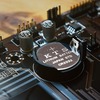The smart clothing market has witnessed an incredible transformation over the past few years, with a growing integration of technology into everyday apparel. By 2025, this innovative sector is expected to reach new heights, revolutionizing how we think about fashion, comfort, and functionality. The combination of textiles, wearable tech, and advanced features is not only making clothing smarter but also reshaping the fashion industry.
What is Smart Clothing?
Smart clothing, also known as e-textiles or smart fabrics, refers to garments embedded with electronic components, such as sensors, conductive threads, or microprocessors. These clothes can monitor and collect data on body temperature, heart rate, physical activity, and even posture, offering a unique blend of comfort, health, and convenience. Examples of smart clothing include fitness tracking shirts, heated jackets, and even clothing designed to help manage medical conditions.
Driving Factors Behind the Growth of Smart Clothing
Several factors are contributing to the rapid growth of the smart clothing market. Key drivers include:
- Technological Advancements: The development of flexible, lightweight, and durable electronic components has made it easier to integrate advanced technology into fabrics. Innovations in wireless communication, Bluetooth, and the Internet of Things (IoT) are also enhancing the functionality of smart clothing.
- Health and Wellness Trends: With a growing focus on personal health, fitness, and wellness, consumers are increasingly looking for ways to monitor and improve their physical well-being. Smart clothing offers a convenient way to track vital signs, optimize workouts, and even prevent injuries.
- Athleisure and Fashion Evolution: The rise of athleisure—clothing that blends athletic and casual wear—has accelerated demand for smart clothing. Fashion-forward consumers are drawn to garments that offer both style and practical functionality, paving the way for an intersection of technology and fashion.
- Increased Consumer Awareness: As more people become aware of the benefits of wearable technology, the demand for smart clothing is expected to increase. The growing adoption of health and fitness gadgets, like smartwatches and fitness trackers, is driving interest in smart clothing as part of a broader ecosystem of connected devices.
Market Segmentation and Key Players
The smart clothing market is diverse, with applications spanning healthcare, sports and fitness, military, fashion, and more. In healthcare, for example, smart fabrics are being used in garments designed to monitor patients remotely, detect vital signs, and even alert healthcare providers about emergencies.
Sports and fitness applications remain a major focus, with products like shirts that monitor heart rate, running shoes with pressure sensors, and jackets that track performance metrics. Military applications are also becoming more prevalent, where smart fabrics can provide soldiers with real-time information about their surroundings or enhance body temperature regulation.
Key players in the smart clothing market include Hexoskin, Sensoria, Wearable X, OMSignal, and Ralph Lauren. These companies are leveraging partnerships, acquisitions, and product innovations to expand their presence in the growing market.
Forecast for the Smart Clothing Market by 2025
According to industry experts, the global smart clothing market is expected to grow significantly by 2025. The market is projected to surpass USD 5.4 billion by that year, with a robust compound annual growth rate (CAGR). Key regions driving this growth include North America, Europe, and Asia-Pacific, with the U.S. and China emerging as significant players in the development of wearable technology.
As consumers continue to embrace the idea of integrating technology with fashion, the market will likely experience increased investment in research and development. This will lead to even more innovative solutions in the form of advanced fabrics, smart textiles, and seamless integration with other digital platforms.
For More Info https://gmiresearch.com/report/smart-clothing-market-analysis-industry-research/
Conclusion
The smart clothing market is poised for remarkable growth by 2025, driven by advancements in wearable tech, consumer demand for health and fitness solutions, and the growing intersection of fashion and technology. As smart clothing evolves, it will continue to shape not only the way we dress but also the way we live and experience the world. The future of fashion is smart, and it’s just getting started.
By 2025, smart clothing could become an integral part of everyday life, enhancing both our physical and digital experiences. Whether you’re an athlete, a health-conscious individual, or simply looking for the next big trend in fashion, smart clothing promises to deliver a blend of innovation, style, and practicality.




Visit Page: https://www.loveloren.com/